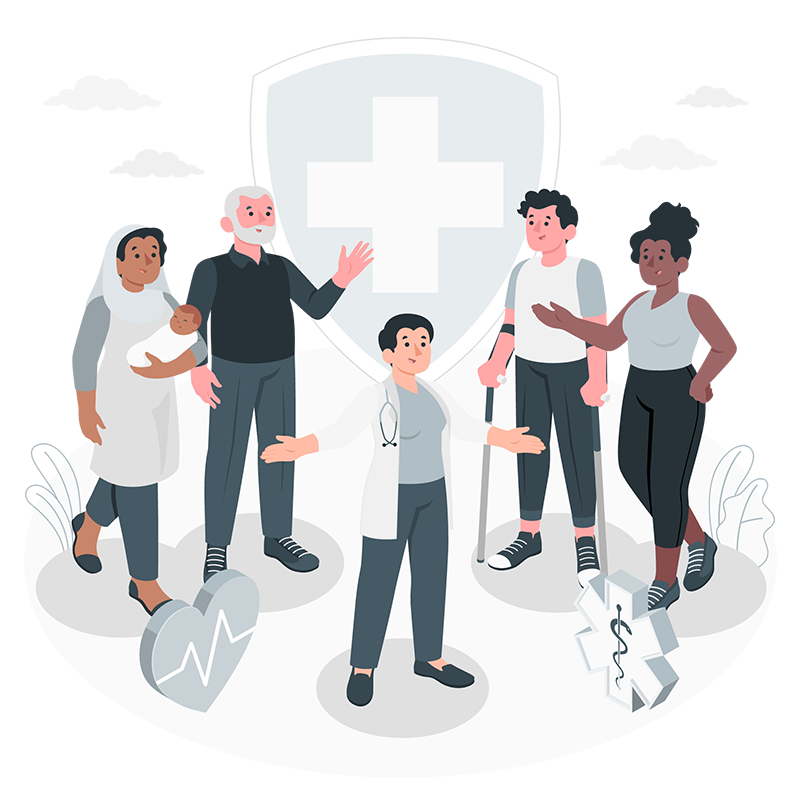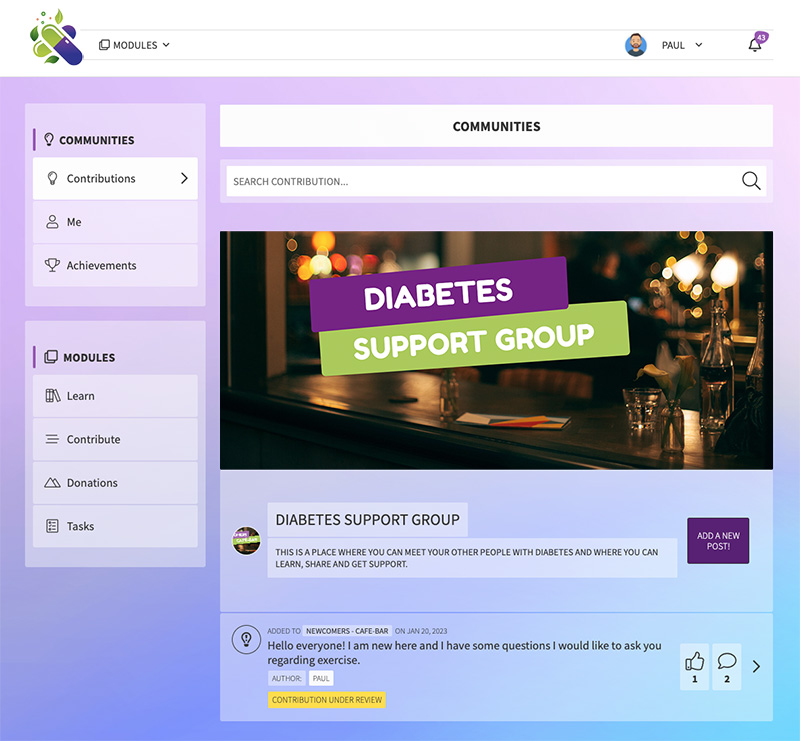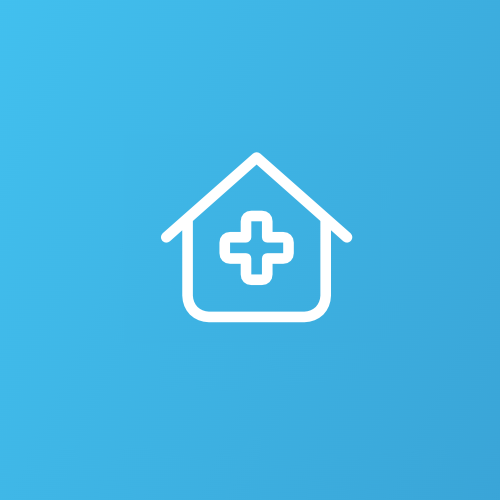GFOUNDRY SOLUTIONS BY INDUSTRIES
Talent Management in Healthcare and Pharma industry
Why talent management is important in Healthcare and Pharma industry?
In Healthcare and Pharma industry, talent management is particularly important because Pharma and Biotech organizations need to address their talent management challenges by providing an innovative, comprehensive and user-friendly platform to attract, develop, engage, and retain top talent.

What are the Healthcare and Pharma industry challenges?
The Healthcare and Pharma industry challenges are:
Talent Shortages Talent shortages in the health sector are a growing concern around the world. There are several reasons for these shortages, including population growth, aging demographics, and increasing demand for healthcare services.
Job Hopping One of the main reasons for job hopping in the healthcare sector is the shortage of skilled healthcare professionals. As demand for healthcare services increases, healthcare organizations struggle to find enough qualified and experienced healthcare professionals to meet their needs. This leads to a situation where healthcare workers may choose to switch jobs frequently to take advantage of better pay, benefits, or work conditions.
Limited opportunities for career growth The healthcare sector is highly regulated, and there are limited opportunities for career growth. This can make it challenging for healthcare professionals to advance their careers, which can lead to job dissatisfaction and turnover.
Employee Burnout Healthcare professionals deal with high levels of stress and emotional demands on a daily basis. This can take a toll on their mental and physical health, which can lead to burnout and high turnover rates.
Lack of work-life balance Healthcare professionals often work long and irregular hours, which can make it difficult to achieve a good work-life balance. This can lead to burnout and high turnover rates.
Upskilling and Reskilling This challenges are prevalent in the health sector, as healthcare is a rapidly evolving, so, training programs must keep pace with changes in technology, regulations, and patient care practices. Healthcare professionals work long hours, and finding time for training can be challenging.
Patient Safety This is a critical concern in the health sector, and there are several challenges that healthcare organizations face in ensuring that patients receive safe and high-quality care. Examples: medication errors, healthcare-associated infections, communication breakdowns (Poor communication between healthcare professionals can result in errors or delays in diagnosis, treatment, or follow-up care.)
Privacy/GDPR With patient information rapidly shifting to digital records, privacy and compliance with data laws are a new challenge for HR managers in healthcare.
How can GFoundry’s platform help address the Healthcare and Pharma industry challenges?
1. Recruitment and Onboarding
GFoundry includes tools for managing the entire recruitment and onboarding process, which can help attract and onboard top talent in health sector more efficiently. This can be particularly valuable in the current talent shortage environment.
You can build personalized onboarding programs, providing immediate and easy access to personalized training and orientation programs. Know more here.
5. Patients & Employees social groups
Creating patients and employees social groups in the healthcare sector can provide several benefits like Emotional Support, Information Sharing, improved Health Outcomes, Sense of Community and Empowerment.
6. Innovation Management
Innovation is crucial for Healthcare industry to stay ahead of the curve and remain competitive.
GFoundry’s innovation management solutions allows Healthcare organizations to encourage and manage employee ideas and innovations.
This platform can help to create a culture of innovation, promote new ideas, and identify opportunities for growth and development. Read more here.
7. Communication breakdowns
This is a significant challenge in patient safety. Poor communication between healthcare professionals can result in errors or delays in diagnosis, treatment, or follow-up care. Healthcare organizations must develop clear and effective communication channels, including standardized handover processes, to ensure that important information is communicated effectively between healthcare professionals.
8. Pulse surveys and feedback
One of the strategies that can combat Job Hopping is constant feedback and listening to employees. In addition to pulse surveys, it is important to present paths and opportunities within the organization. Know more here,
9. Succession Planning
GFoundry’s platform includes tools for identifying and developing high-potential employees, and for creating succession plans to ensure continuity in key roles. This can help to address the potential impact of employee burnout and turnover.
10. Compensation and benefits
To ensure that your healthcare organization attracts the most qualified candidates and retains them with competitive compensation and benefits packages, It is important to understand, beyond compensation, which non-financial benefits each person or group of people value most. You can use GFoundry’s Comparisons module and let employees choose the benefits that suit them best from the benefits available.
11. Gamification
GFoundry platform includes a powerful gamification engine, which can be used to make several processes more engaging and motivating. This can be especially helpful for employees who may be struggling with literacy challenges, as it can make the learning process more fun and enjoyable.
Also, Gamification can offer several benefits for patient medication and recovery plans, like Increased Motivation, Improved Adherence, Behavioral Change, Patient Education, Data Collection and Social Support. Know more here.
A HOLISTIC APPROACH
The importance of connecting and aligning all players in the healthcare ecosystem
Effective communication and collaboration between all members of the healthcare ecosystem are essential for delivering high-quality healthcare services.
This involves listening to the patient’s needs and concerns, involving their family and community in the treatment process where appropriate, and working together to develop and implement a treatment plan that is tailored to the patient’s unique needs and circumstances.
In addition to the patient, family, and community, the hospital and healthcare staff also play a critical role in this relationship.
Healthcare staff are trained to provide clinical expertise, medical resources, and emotional support to patients and their families.
This can include providing education on the patient’s condition and treatment options, managing medications and other medical interventions, and providing emotional support and counseling.
The GFoundry platform can support all the digital processes required for these communication networks and connections between the various players in the ecosystem.

Meet some real use cases in Healthcare and Pharma industry
Knowing real cases helps to understand the potential of the GFoundry platform and shows how some companies have solved and achieved some of their challenges.
Keep on reading:
-
Benefits of a Good Organizational Climate: Productivity and Talent Retention
-
Building Resilient and Adaptive Workforces: A Global Talent Trends Study
-
Talent management platform to boost employee engagement
-
How to Choose the Right Talent Management Platform for Your Business
-
How to Attract, Retain, and Develop Top Talent
-
The Ultimate Guide to Remote Talent Management
-
The Impact of the Employee Value Proposition on Talent Attraction
-
HR Trends: What Will HR Look Like in 2024?
-
How to improve Employee Engagement and Performance? Your Ultimate Guide
-
Employee well-being – the complete guide
-
How to create Impactful Learning Journeys for Employees?
-
Feedback: what it is, its importance and how to do it (complete guide)
-
OKRs – Objectives and Key Results: what they are, what their purpose is and how they can be useful when applied in an agile way
-
What is the importance of Compensation and Benefits for employees?
Ready to get started?
Take the next step and learn more about how GFoundry can help you.


